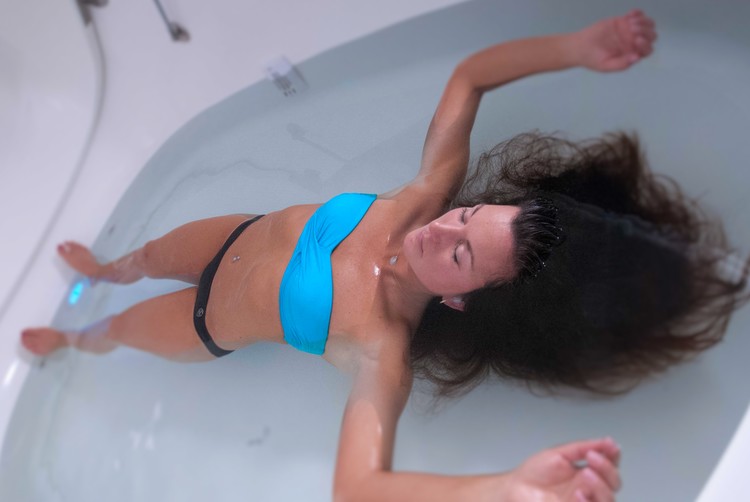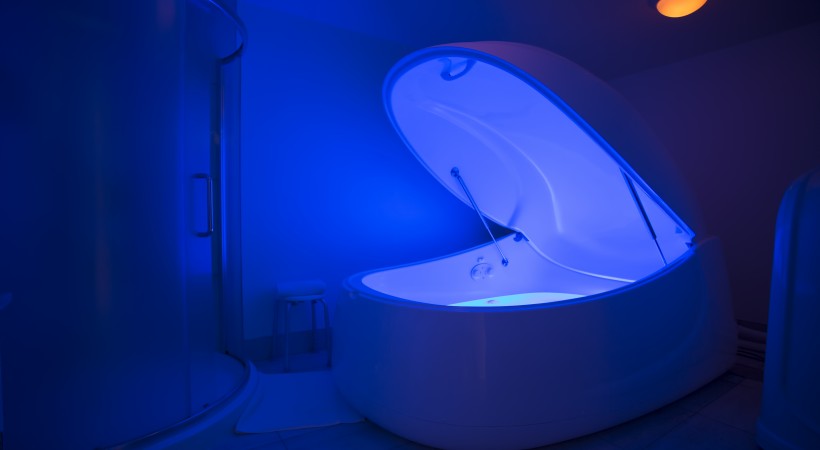When was the last time you switched off for at least an hour? I mean completely. No phone. No traffic. No kids. No noise, flashing lights or other distractions. Besides sleeping, it probably doesn’t happen often. And when it does, your brain is no doubt racing through everything that needs to get done by the end of the day.
It’s no wonder people all over Canada are eagerly climbing into pitch black, soundproof pods of water for an hour and a half. Yep. That’s what floating (aka sensory deprivation or floatation therapy) is all about.
Continuing with February’s self care challenge, here’s a rundown on what floating is, and why it’s a great self care option.
Why is floating so effective?
Floating is a rare opportunity to eliminate all external stimuli and focus entirely on yourself. The deep relaxation caused by floating creates amazing chemical changes in your body, clearing your mind and encouraging positive thoughts and feelings.
Scheduling an appointment for a float is a commitment to your self care. It’s hugely effective because while you’re in the floatation tank, you aren’t bothered by anyone or tempted to check your phone. This time out allows you to fill up your self care tank to rejuvenate your mental and spiritual health and happiness. Having a full tank also means you’re able to offer others extra love and support when their tank is running low.
Where did the floatation tank concept come from?
Though floatation tanks have been around for 40 years, most people have only heard of them over the last few years. Way back in 1954 neuroscientist John Lilly was exploring consciousness and the idea that if the brain was isolated from external stimulation it would go to sleep. To test his theories, he created the first sensory deprivation floatation tank.
In the 1970s two psychologists at the University of British Columbia took that research further and began studying the therapeutic benefits of floating, calling this Restricted Environmental Stimulation Technique, R.E.S.T. (How apt!)
How does it work?
With floating, you get your own private room where you’ll strip down, have a shower and hop into a lightproof, soundproof floatation tank. It’s filled with about 10 inches of water heated to skin temperature (34-35° C). Epsom salts added to the water create buoyancy, allowing you to float supine (lying face up).
Once you’re settled, you won’t even feel the water and quickly forget you’re in a pod. You’ll just feel like you’re floating through space.
It actually takes some effort to flip over, so you needn’t worry about drowning if you doze off. Tracey from float studio Afloat adds that sometimes “people are worried about being claustrophobic but it has yet to prevent anyone from actually floating. Once they see how big the pods they are, and know they can leave lights and music on, or even leave the lid open, they are able to relax into the experience.”
What the heck do you do in there for 90 minutes?
SWITCH OFF!!
It takes a little getting used to initially, but once you’ve adjusted to the sensation, use the time to practice self care however you like. Lay quietly, meditate, reflect, and gain more awareness of your own body. When your body is in deep relaxation mode your brain is more easily swayed, so when reciting loving affirmations for example, they are more likely to weasel their way into your subconscious (and hopefully be on standby when you’re having a tough day!).
Some float studios allow you to plug in your device and listen to music or guided meditations if you prefer.
How is floating good for you?
Besides giving yourself much needed time out, floating is amazing for reducing anxiety, feeling calm and clearing the mind. It also boosts the production of endorphins; your body’s natural painkillers which relieve stress and crank your happiness levels way, way up.
If that’s not enough, floating also:
- Offers stress relief by almost instantly slowing down your heart rate
- Helps manage depression
- Decreases high blood pressure
- Alleviates rheumatic conditions (by reducing the force of gravity and improving blood flow to painful joints)
- Reduces muscular-skeletal pain (by releasing muscle tension and boosting circulation)
- Helps muscles recover after working out
“Floating frequently at the outset (once a week) can really illuminate some deep aspects of yourself and give you the feeling of ease or peace. And then maintenance floats can be very effective spaced out a little more” according to Tracey.
So, are you game? Give it a go and let me know what you think in the comments below!
*Photos courtesy of Afloat float studio, Thunder Bay


Leave a Reply